Home » Geomagnetism
Category Archives: Geomagnetism
Current state and perspectives of Space Weather science in Italy
Papers from SWICo members
Plainaki Christina, Antonucci Marco, Bemporad Alessandro, Berrilli Francesco, Bertucci Bruna, Castronuovo Marco, De Michelis Paola, Giardino Marco, Iuppa Roberto, Laurenza Monica, Marcucci Federica, Messerotti Mauro, Narici Livio, Negri Barbara, Nozzoli Francesco, Orsini Stefano, Romano Vincenzo, Cavallini Enrico, Polenta Gianluca, Ippolito Alessandro
This paper presents a brief state-of-the-art in Space Weather science in Italy and discuss some ideas on a long-term plan for the support of future scientific research in the related disciplines. Italian teams contributed in the advancing of our knowledge on the properties and evolution of the Space Weather phenomena with observational campaigns from space and from the ground. Numerous Space Weather forecasting and now-casting modeling efforts have resulted in a remarkable add-on to the overall progress in the field, at both national and international level. The Italian Space Agency participated several times in space missions related to Space Weather; indeed, the development of new instrumentation for future Heliophysics and Space Weather space missions will be very important for the Italian scientific and industrial communities.
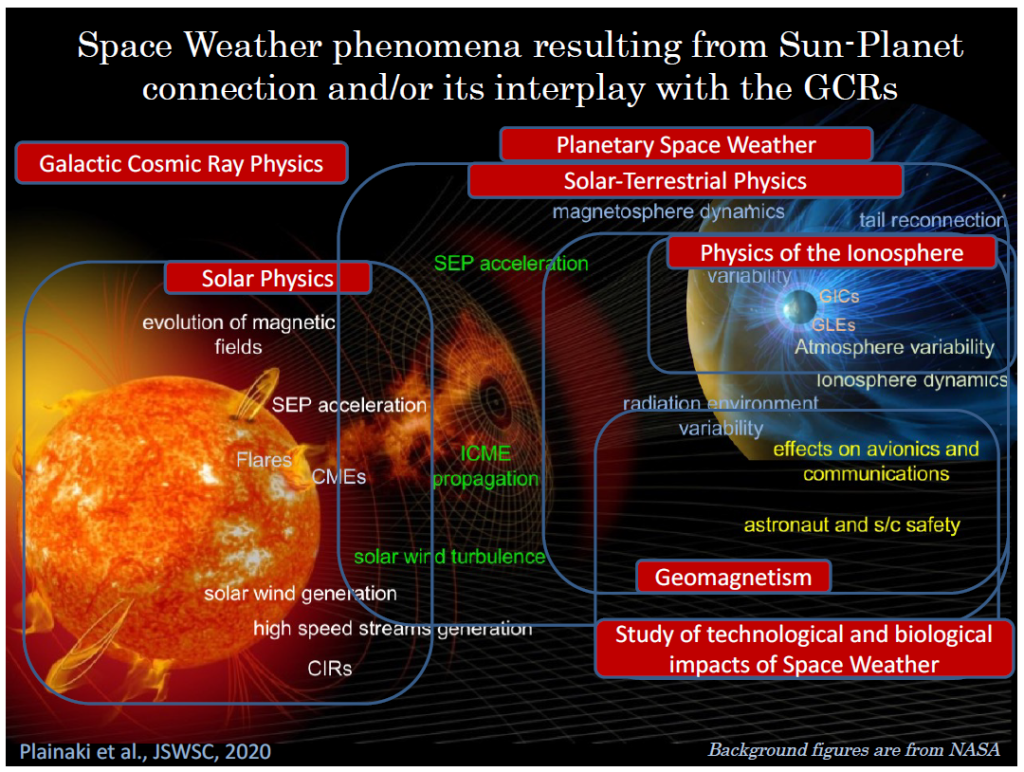
The Italian Space Agency aims to assess the possibility to develop a national scientific Space Weather data centre to encourage synergies between different science teams with interest in the field and to motivate innovation and new mission concept development. Alongside with the proposed recommendations, this paper also discusses how the Italian expertise could complement international efforts in a wider international Space Weather context.
Publication: Plainaki C., Antonucci M., Bemporad A., Berrilli F., Bertucci B., Castronuovo M., De Michelis P., et al., 2020, JSWSC, 10, 6. doi:10.1051/swsc/2020003. https://www.swsc-journal.org/articles/swsc/abs/2020/01/swsc190014/swsc190014.html
The Great Aurora of 4 February 1872 observed by Angelo Secchi in Rome
Papers from SWICo members
Francesco Berrilli, Luca Giovannelli
On February 4, 1872, exactly 150 years ago, a great aurora was observed over a vast extent of the Earth. The aurora was also observed in Rome. In a pioneering work by Angelo Secchi, then director of the Observatory of the Roman College, there is the description of the multi-instrument observations carried out in Rome. An avant-garde work that describes what today we call an extreme event of Space Weather, an event with consequences on technological infrastructures on a planetary scale.
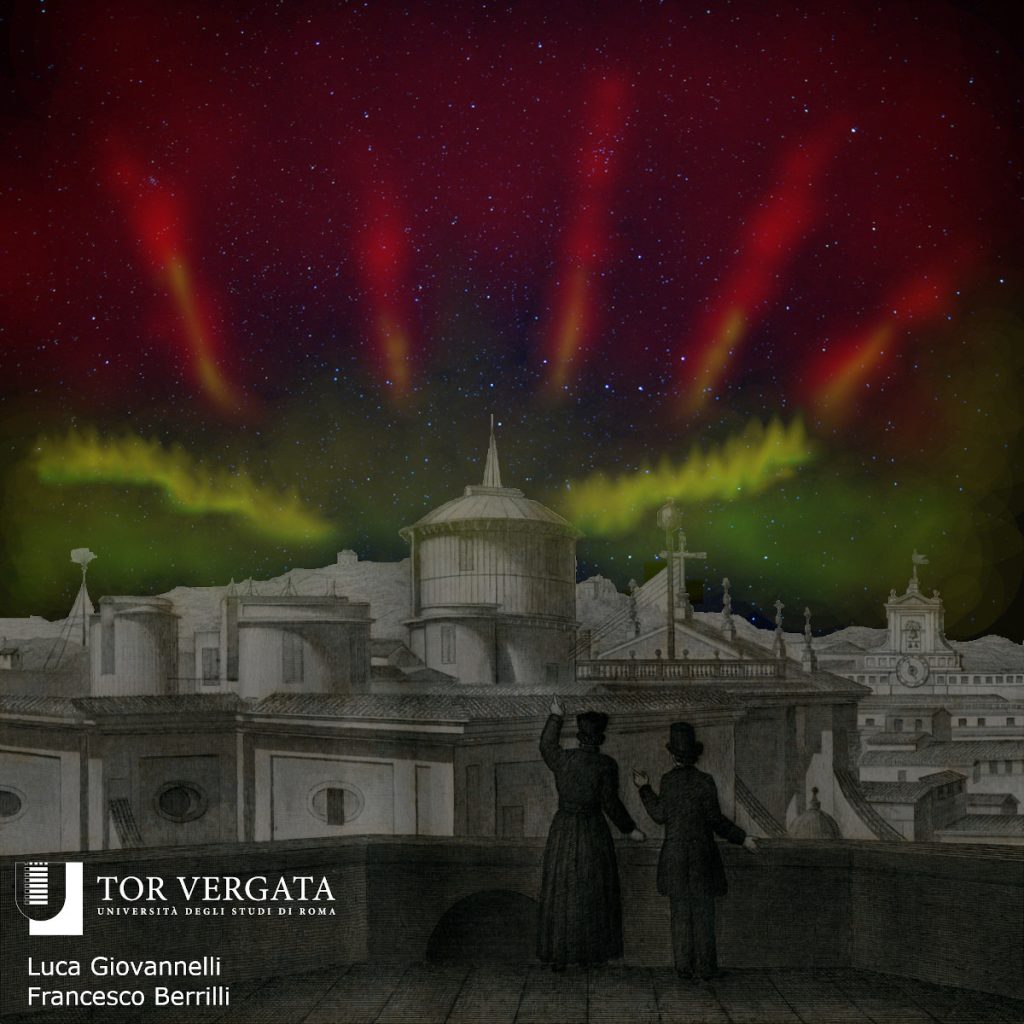
In a recent paper, we describe the main results of the observations and studies carried out by Angelo Secchi at the Observatory of the Roman College and described in his “Memoria sull’Aurora Elettrica del 4 Febbraio 1872” for the Notes of the Pontifical Academy of new Lincei.
Publication: Berrilli F., Giovannelli L., 2021, Journal of Space Weather and Space Climate, vol. 12. https://www.swsc-journal.org/articles/swsc/full_html/2022/01/swsc210083/swsc210083.html
Hints on the Multiscale Nature of Geomagnetic Field Fluctuations During Quiet and Disturbed Periods
Papers from SWICo members
L. Santarelli, P. De Michelis, G. Consolini
We analyse the short timescale fluctuations (τ < 200 min) of the magnetic signals recorded at 78 ground stations from 13 to 31 March 2015, focusing our attention on sources which are external to the Earth, that is, due to current systems flowing in the ionosphere and magnetosphere, and investigating their dependence on magnetic latitude, magnetic local time, and geomagnetic activity. We find that, at geomagnetic latitudes >|60°|, such fluctuations constitute more than 30% of the external magnetic field, and their maximum contribution occurs along the auroral oval suggesting that they are mainly triggered by the ionospheric electric current systems active in these regions.

These short timescale magnetic fluctuations are very relevant in contributing to the prediction of geomagnetically induced currents in the auroral zones.
Publication: L. Santarelli, P. De Michelis, G. Consolini, Hints of the Multiscale Nature of Geomagnetic Field Fluctuations during Quiet and Disturbed Periods, J. Geophys. Res.: Space Physics, 126 (5), 2021. https://doi.org/10.1029/2020JA028596
Forecasting SYM‐H Index: A Comparison Between Long Short‐Term Memory and Convolutional Neural Networks
Papers from SWICo members
F. Siciliano G. Consolini, R. Tozzi, M. Gentili, F. Giannattasio, and P. De Michelis.
Geomagnetic indices are proxies of the geomagnetic disturbances observed on the ground during geomagnetic storms and substorms. So, their forecasting represents a key point to develop warning systems for the mitigation of possible effects of severe geomagnetic storms on critical ground infrastructures. Here, we forecast SYM‐H index using two artificial neural network models based on two conceptually different networks: the Long Short‐Term Memory (LSTM) and the Convolutional Neural Network (CNN). Both networks are trained with two different sets of data: 1) interplanetary magnetic field (IMF) components and magnitude, and 2) interplanetary magnetic field components and magnitude and previous SYM‐H values. Specifically, we selected 42 geomagnetic storms among the most intense occurred between 1998 and 2018.
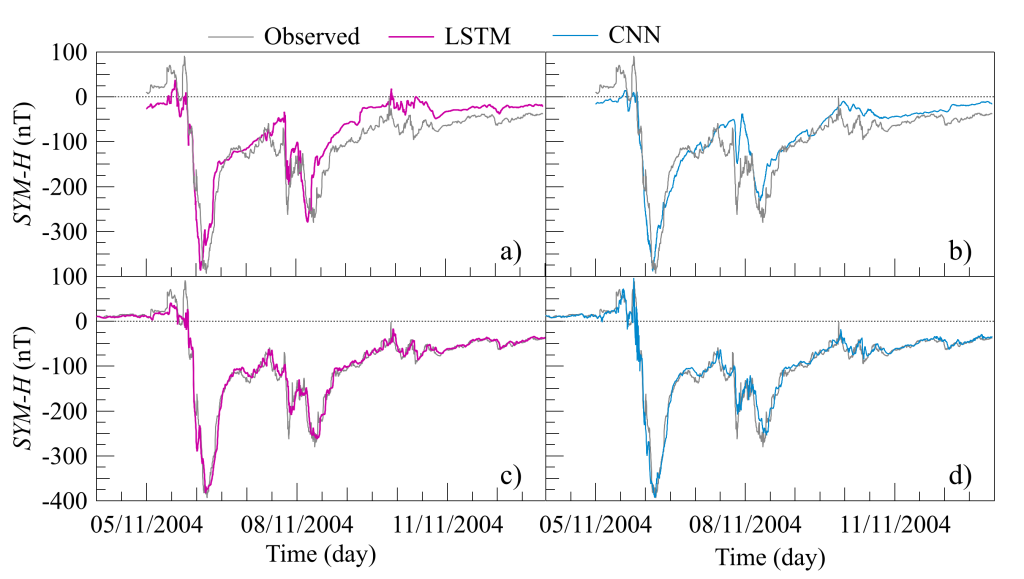
The performance of the two models has been compared thus pointing out the peculiarity of each model. In summary we have found that: 1) both networks are able to well forecast SYM‐H index 1 hour in advance, with values of the coefficient of determination R2 larger than 95%; 2) when using the data set that includes SYM-H index the model based on LSTM is slightly more accurate than that based on CNN; 3) differently, when using the data set consisting of IMF values only the model based on CNN displays a higher accuracy than that based on LSTM.
Publication: F. Siciliano G. Consolini R. Tozzi M. Gentili F. Giannattasio P. De Michelis, Forecasting SYM‐H Index: A Comparison Between Long Short‐Term Memory and Convolutional Neural Networks, Space Weather, 19 (2), 2021. https://doi.org/10.1029/2020SW002589
Linear vs nonlinear methods for detecting magnetospheric and ionospheric current systems patterns
Papers from SWICo members
T. Alberti, F. Giannattasio, P. De Michelis and G. Consolini.
The geomagnetic field time series can be viewed as a superposition of signals which represent the different contributions to it at different scales coming from various sources both internal and external to the Earth. Here, we apply two different methods of analysis in order to recognize in the magnetic field of external origin the different contributions coming from external sources, making use of measurements of the vertical component of the geomagnetic field (directed away from the Earth’s center) recorded by the European Space Agency (ESA) Swarm A and B satellites at low and mid latitudes during a geomagnetically quiet period.
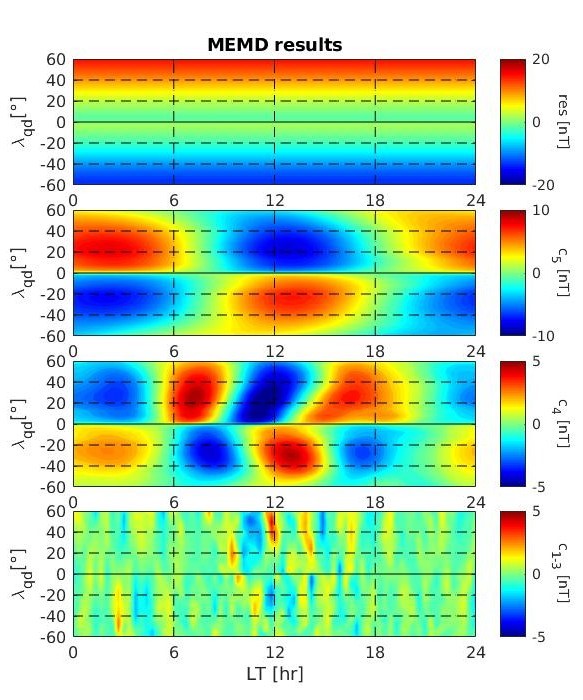
The first is a linear method, that is, the Empirical Orthogonal Functions (EOF); the second is a nonlinear one, i.e. the Multivariate Empirical Mode Decomposition (MEMD). As the external contributions to the magnetic signal are intrinsically nonlinear, the MEMD seems to give better results with respect to EOF, and only five modes and a residue are necessary to reproduce the different contributions coming from the external sources against the 26 modes that are necessary in the case of the EOF. This study is an example of the potential of the MEMD for the analysis of the geomagnetic field of external origin, and of its capability to separate the ionospheric from the magnetospheric contributions in a simple and rapid way.
Publication: T. Alberti, F. Giannattasio, P. De Michelis and G. Consolini, Linear vs nonlinear methods for detecting magnetospheric and ionospheric current systems patterns, Earth and Space Science, 2020.
https://doi.org/10.1029/2019EA000559
On the multifractal features of low-frequency magnetic field fluctuations in the field-aligned current ionospheric polar regions: Swarm observations
Papers from SWICo members
G. Consolini, P. De Michelis, T. Alberti, F. Giannattasio, I. Coco, R. Tozzi, and T. T. S. Chang
In this work we have characterized the magnetic field fluctuations in the high latitude ionosphere by means of high resolution magnetic measurements (50 Hz) from the European Space Agency Earth’s observation mission Swarm.
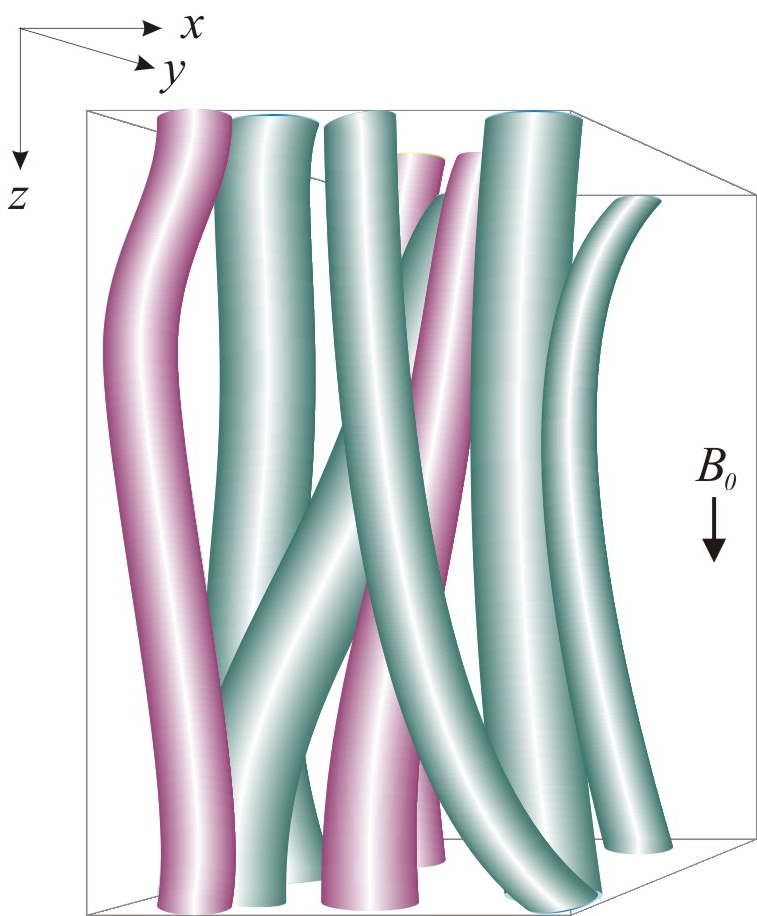
We found anomalous spatiotemporal scaling features of magnetic field fluctuations in regions where field‐aligned currents occur, at spatial scales in the range 0.8–80 km (timescales in the range 0.1–10 s). The nature of these fluctuations is multifractal, suggesting a highly complex structure of the field‐aligned currents. Our results support the hypothesis that field‐aligned currents are filamentary in nature, and this paves the way to new perspectives in the comprehension of the physical processes responsible for the magnetospheric‐ionospheric coupling.
Publication: G. Consolini, P. De Michelis, T. Alberti, F. Giannattasio, I. Coco, R. Tozzi, and T. T. S. Chang, On the multifractal features of low-frequency magnetic field fluctuations in the field-aligned current ionospheric polar regions: Swarm observations, J. Geophys. Res.: Space Physics, 125, 2020.
https://doi.org/10.1029/2019JA027429
A Preliminary Risk Assessment of Geomagnetically Induced Currents over the Italian Territory
Papers from SWICo members
Authors:
Roberta Tozzi, Paola De Michelis, Igino Coco, Fabio Giannattasio
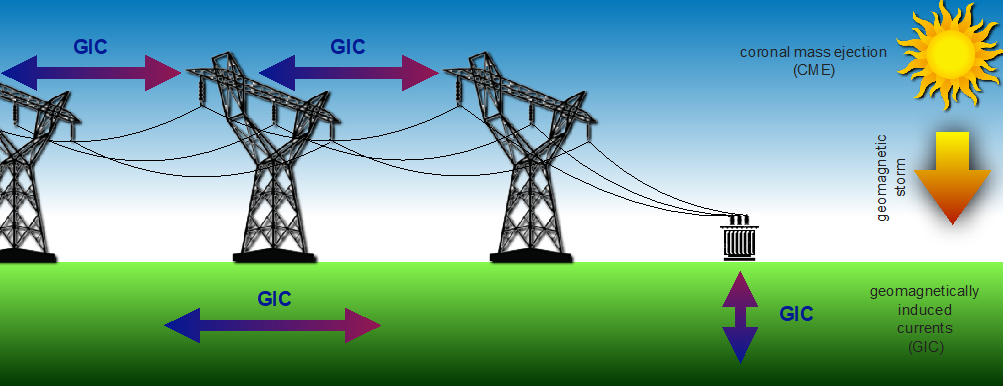
Major geomagnetic storms drive rapid intensification and variability of magnetospheric and ionospheric current systems that give rise to large ground geomagnetically-induced currents (GIC). Space weather associated GIC pose a serious threat to the reliability of power-transmission systems and other electrically conducting infrastructures such as oil and gas pipelines. The most severe effects are observed at high latitudes due to ionospheric currents associated with the aurora. However, as power transmission grid and pipeline infrastructures continue to grow at middle and low-latitudes, GIC hazards are no longer just concerns of high-latitude regions.

We provide a preliminary characterisation of the general risk to which the Italian power grid network is exposed. Due to limited direct GIC measurements, a proxy of the geoelectric field is used, i.e. the GIC index. This is calculated for a time interval of approximately 20 years using data from the two longest running Italian magnetic observatories, i.e. Castello Tesino and L’Aquila. Results show that during periods of high geomagnetic activity, potentially detrimental GICs could flow through the power network, especially at the highest Italian latitudes that are characterized by a low conductivity lithosphere.
Publication: Tozzi, R., De Michelis, P., Coco, I., Giannattasio, F., 2019. A Preliminary Risk Assessment of Geomagnetically Induced Currents over the Italian Territory, Space Weather, 17, 46-58, doi: 10.1029/2018SW002065. https://agupubs.onlinelibrary.wiley.com/doi/full/10.1029/2018SW002065
More information:
http://www.lescienze.it/news/2011/08/11/news/il_ritorno_della_grande_aurora-551058/
https://www.swpc.noaa.gov/content/education-and-outreach
